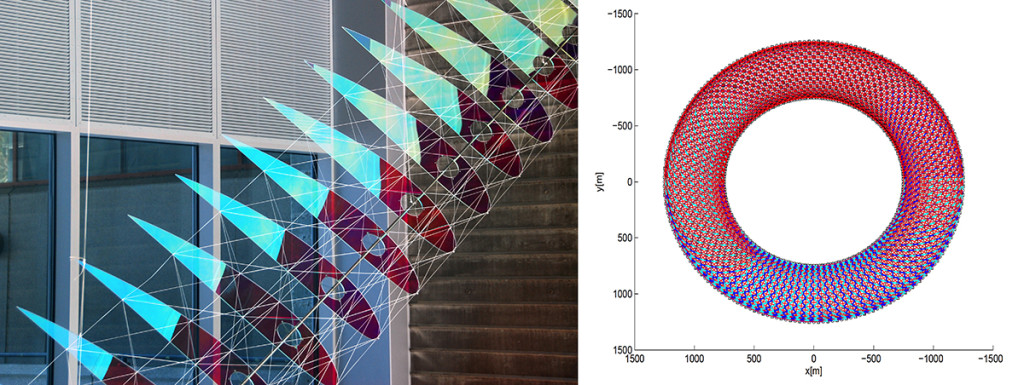Nov 20 Wed
Lecture by Dr. Robert Skelton
7:30pm @ the IFF 
In the 1960’s Buckminster Fuller coined the term “tensegrity” to name a kind of form in which tension produces structural integrity. Fuller’s geodesic domes are one example of tensegrity structures, as are the enigmatic cable+stick sculptures of his student Kenneth Snelson. Spiderwebs, blood cells, and the network of our tendons and bones are also tensegrities. Indeed, tensegrities produce the architecture of life. Every cell in our bodies is undergirded by a tensegrity linkage of proteins. Understanding tensegrities is not only advancing our knowledge of the natural world, it is leading to insights that will revolutionize structural engineering, enabling us to build new kinds of bridges, airplanes, skyscrapers, and space stations in ways that are stronger, more efficient and more beautiful. In this rare public talk, engineer Robert Skelton will discuss his research on tensegrity structures and their applications to biology, architecture, material science, and space exploration.Presented in conjunction with the IFF’s Science + Art Residency, Being Formed.Dr. Robert Skelton is Professor Emeritus of Mechanical and Aerospace Engineering at the University of California, San Diego. Skelton began his career at the Marshall Space Flight Center, working first with Lockheed Missiles and Space Company and then for Sperry Rand. He has been involved with the control of the Hubble Space Telescope and SKLAB. In the early 1990’s, after seeing one of Snelson’s tensegrity sculptures, he was prompted to rethink the foundations of structural engineering. His research over the past two decades has illuminated the mathematics of the tensegrity network inside red blood cells and led to a radical new way of understanding the interaction between mechanical structures and their control systems. Skelton is currently working on the design for a tensegrity bridge and is spearheading a feasibility study for NASA to build a two-mile-wide space station based on tensegrity principles. He is the author of the graduate level textbook book “Tensegrity Systems” which explores these structures in nature, engineering, and art.